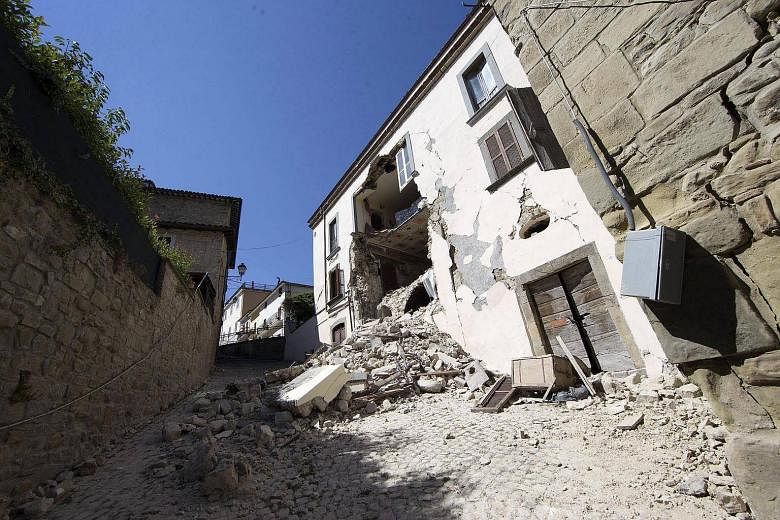ROME • Shoddy, price-cutting renovations, in breach of local building regulations, could be partly to blame for the high death toll from last week's devastating earthquake in central Italy, according to a prosecutor investigating the disaster.
As questions mount over the deaths of nearly 300 people, prosecutor Giuseppe Saieva indicated that property owners who had sub-standard work done could be held responsible for contributing to the quake's deadly impact.
Mr Saieva, who works in the Rieti region between Rome and the quake's epicentre, said the tragedy could not simply be filed away as an unavoidable natural disaster.
"If the buildings had been constructed as they are in Japan, they wouldn't have collapsed," he told the La Repubblica newspaper.
Within hours of the quake hitting last Wednesday, Mr Saieva was in Amatrice, the small mountain town that was hit hardest.
He is inspecting the damage there before opening a preliminary investigation for possible culpable homicide and causing a disaster.
The crushed partition walls of a collapsed three-storey villa were among the sights that caught his eye. "I can only think it was built on the cheap with more sand than cement," he said.
A number of engineering and architectural experts have highlighted the widespread use of relatively cheap cement beams for house extensions and renovations as a possible factor explaining why so many buildings collapsed.
Heavy and inflexible, the cement beams become deadly if released by shaking because they will crush older walls beneath them.
"If it emerges that individuals cut corners, they will be pursued and those that have made mistakes will pay a price," the prosecutor said.
The issue of whether some of the deaths could have been avoided is particularly acute in the Amatrice area because it is just 56km to L'Aquila, which was hit by a 2009 earthquake in which more than 300 people perished.
An outcry over the shoddy, corrupt building practices which led to so many buildings in the university city being inadequately prepared for a quake led to the national Civil Protection agency making almost €1 billion (S$1.5 billion) available for upgrading buildings in quake-vulnerable areas.
But the take-up of grants has been low. Critics blame bureaucracy but others maintain that independent-minded villagers will always find the cheapest way of getting their renovations done, whatever the risks.
In addition to the human cost of last Wednesday's tragedy, Italian authorities are beginning to assess what the loss of Amatrice and similar small, ancient and remote towns means for the country's extensive cultural heritage.
In a preliminary report issued last Friday, the Carabinieri Art Squad - a branch of the Italian national police - listed more than 50 historic sites gravely damaged or destroyed in the earthquake.
Most of them were small village churches that have stood in dusty town squares for centuries, marking the events that still define the cycle of life in rural Italy: christenings, weddings, funerals.
In Amatrice, known as the town of "100 churches", at least 15 were destroyed - including Sant'Agostino, a 15th-century structure decorated with elaborate frescoes and a rose window on its facade.
What does remain is the town's clock tower, with the hands stopped at 3.36am, the moment on Wednesday morning when the earthquake struck.
Ms Marina Gentile, 53, and Mr Roberto Serafini, 52, a married couple in Amatrice who found themselves in an emergency camp outside their town, struggled to make sense of what had happened to their universe.
"Only that tower remains, which means that if she was left standing, we can make it, too. If she falls, I don't know," said Ms Gentile.
AGENCE FRANCE-PRESSE, WASHINGTON POST

